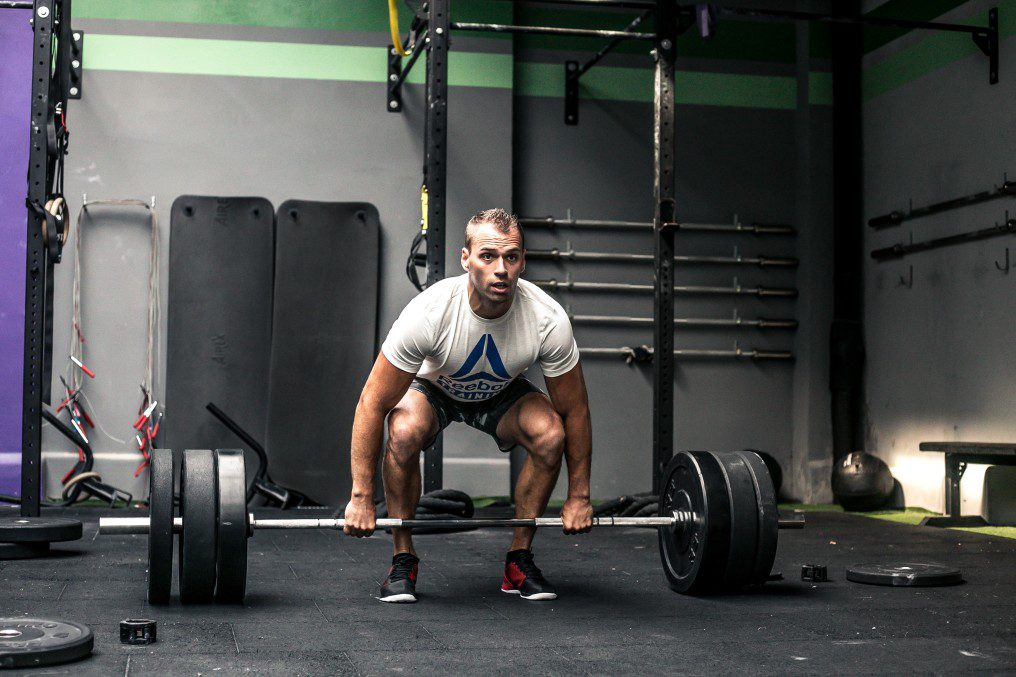

Lifting Weights With Sciatica
Whether you're trying to keep fit or work on your body mass index, the gym can be a regular part of your significant activities. This journey often comes with body changes, including stress and strains that cause localized pain in some areas.
One of these pains can be a sign of sciatica, which may have already developed as you wanted to lift weights or may have grown as you started lifting weights. Either way, all is not lost.
With a bit of understanding of sciatica and consultation with your doctor, you can comfortably go on with your weightlifting journey, having made the necessary adjustments.
What is Sciatica?
An injury or irritation causes this condition to the sciatic nerve. It is characterized by sharp jolts of pain in the lower back or leg but may vary with the patient.
It may be worse with sudden movements like sneezing or standing up after sitting for a while. This also includes twisting your upper body or bending.
The pain may be acute, occurring in episodes once or twice a year, or chronic, often requiring invasive medical treatments. Otherwise, sciatica can be treated with medical and physiotherapy intervention.
The Sciatic Nerve

The sciatic nerve branches from the lower back through the hips and buttocks and down each leg. It is the largest nerve in the body and is formed by the union of five roots from the lower spine.
It is responsible for sensation in the most foot, leg, and thigh areas. It also makes activities such as walking, running, lifting weights, and standing possible.
Sciatic nerve pain is caused by pinching the lumbar vertebrae or the piriformis muscle pinching the sciatic nerve and typically affects one side of the body.
The Benefits of Exercising with Sciatica
While it may seem the opposite, exercising when you have sciatica is more effective for pain relief than lying around and being inactive. Short-term inactivity during flare-ups is okay, but long-term inactivity worsens the pain.
Weightlifting correctly and using mild weights train the muscles and strengthen them. It also prevents poor posture because of weakened muscles from inactivity due to sciatic pain.
Some benefits include:
Enhanced blood flow: With increased exercise, blood flow to the nerves, muscles, and other tissues in the back increases. In this way, the tissues receive a greater amount of nutrients, therefore, promoting healing.
Improved bone health: Exercising increases bone density, reducing bone conditions such as osteoporosis and ankylosing spondylitis.
Increased muscle strength: Exercise ensures the proper engagement of the muscles and increases muscle strength. Strong muscles help support the spine, improve stability, and reduce muscle fatigue.
While it may seem better to lie down and rest, exercising is vital for those with sciatica. Exercising also reduces the stiffness of the sciatic nerve through nerve stretching that maintains the exchange of nutrients between nerves and their surroundings.
Exercises that Cause Sciatica
When doing an exercise, you need to question the area of your body you think the exercise is targeting. This practice makes you conscious of where the strain and stretch are felt while doing the exercise.
Most workouts or sets that tell you to stop specific exercises after failure don't necessarily define what that means. All the given definitions shouldn't include pain.
If you are feeling some pain when lifting weights, there is a high chance you are lifting with poor posture or poor technique. This puts a strain on adjacent muscles to try and maintain the body's balance and support the affected muscles, resulting in pain.
Some of the affected exercises are:
- Bent over rows
Rounding of the back during an exercise is a poor posture. It stresses the spine as it backs up your hips, which are under strain.
The correct posture for doing a bent-over back row is a hinged hip with your chest and back arched, which can also stress the lower back. An alternative to this exercise is a single-arm while bending dumbbell lift with support from the other hand.
- Sit-ups with outstretched legs
Doing sit-ups with straight legs strains the spinal cord in the extensions and flexions that may lead to pain below the waist.
You will depend on the lower back muscles when returning to the initial position while at the same time involving the hamstrings.
- Weighted squats
Squatting with weights such as barbells and dumbbells can result in lower back injuries. When returning to the initial pose, there is increased stress from compression of the nerves and intervertebral disks.
You may even end up with pain in your legs and thighs.
- Heavy deadlifts

It's a trend in the fitness industry to try and deadlift some of the heaviest weights. Don't try to hop on this trend, as it is one of the contributors to back-related pain.
This becomes quickly apparent, especially if you are lifting with poor posture. Heavy deadlifting may not be advisable if you have sciatica, even with proper technique.
- Weighted leg curls and lifts
Don't skip leg day! But ensure you are working out your legs in ways that won't aggravate your back muscles and spine.
Lying face down while using weighted leg curls or lifting equipment strains the lower back. Constant stretching and straining of the back can lead to increased pain during weightlifting.
- Abdominal stretches
Abdominal stretches involve the flexion and compression of the spine. These exercises can cause lower and middle back pain for people with already injured or irritated backs.
Some of the stretches include the cat-cow pose and the cobra pose. Lifting heavy weights in this position can also trigger pain, especially if you do it with a bent back.
When doing abdominal stretches with sciatica, ensure you are slow and gentle in the movements to prevent any pain episodes.
How to Avoid Triggering Sciatica
Episodes of pain caused by sciatica are painful as they shoot down one of your legs, leaving you helpless but in pain. It is better to take steps to prevent it from happening, as it may develop into a chronic problem if it was initially acute.
Some of the ways to avoid triggering sciatic pain include:
Weightlifting
- Have a proper lifting technique
- Use your legs or knees to lift, not your back
- Avoid positions that stress the back
- Avoid squats with barbells
- Talk to a trained instructor or physical therapist for advice on lifting weights
- Don't lift weights when you have a flare-up or just had one
Lifestyle
- Maintain a healthy diet
- Avoid doing chores during a flare-up
- Don't sit on your wallet
- Avoid wearing shoes that stretch the hamstrings, such as heels and uncushioned shoes
How to Lift Weights Safely with Sciatica?
Someone who suffers from sciatica should not be discouraged from lifting weights because it is evident that doing so might be advantageous and that doing so should not be considered a limitation. There are numerous options available to begin weightlifting as part of your fitness routine to maintain your health and dramatically reduce pain.
Some tips to help you lift comfortably:
- Start with low-impact sets
Your muscles will become accustomed to the flexion and compression you put them through throughout a workout, making subsequent activities less painful. Over time, the muscle stiffness and tightness will become less severe.
You can also start by working out for as little as five minutes daily and gradually increasing the time you spend doing it. The more steadily you advance in your workouts, the more your body will become acclimated to the sensation of working out effectively.
When you get to the high-impact activities, make sure to avoid the ones that make the sciatic pain worse or are a trigger for it, such as lifting heavyweights.
- Focus on your posture
Good form is important when exercising. To keep it in check, you could do breathing exercises when weightlifting to improve your focus.
You can also have someone spot you during your reps to maintain good form when lifting. Another way is to record yourself and later check to see if you are doing it right.
- Use cold and hot therapy for pain management.
During exercise, there is a high chance that your muscles will get sore.
Cold therapy involves using cold objects such as an ice pack to reduce nerve stimulation to areas of pain. Using an ice pack after your reps may reduce this soreness.
Heat therapy involves the use of heat for pain management. This can be done before your workout by applying heat to your pelvis as it offers the following advantages:
- Increased blood flow to muscles and tissues.
- Decrease stiffness around the spine and other muscles to increase mobility.
The one rule of hot and cold therapy is hot for stiff and cold for sore. Using heat therapy on sore areas increases blood flow and pain. Using cold therapy on stiff areas further increases the stiffness by slowing blood flow and nerve stimulation.
How to Manage Pain from Lifting Weights With Sciatica

Back pain can be frustrating as it limits the efficient performance of many day-to-day activities. Allowing this to interfere with living everyday life is not an option.
- Visit a chiropractor
Chiropractors manipulate faulty joints that may cause pain and stress muscles and ligaments. Each muscle has its function, and a switched dependence on any other muscle causes a strain that may be painful and may cause pinching of nerves, as in the case of sciatica.
2. Avoid lifting weights during a flare-up.
Save yourself the trouble of trying to complete a workout when you experience pain. Even if you just started working out, don't push your luck by trying to complete the workout, even if the pain has just ended.
This could trigger more pain and lead to a permanent situation in the long term.
3. Maintain good posture
Good posture is important for balancing muscle stress in achieving body balance during daily activities. Poor posture may lead to posture-related problems such as forward head posture.
Forward head posture, often called "nerd's neck," can be caused by weak back muscles that lead to the strain of the upper neck and shoulder muscles as they try to maintain body balance.
4. Visit a doctor
There may be additional reasons for your back pain that can be treated. A regular check-up is vital in your journey, even if you've already been diagnosed with sciatica.
If the flare-ups continue occurring even after the slightest task, such as picking up objects, it is advisable to visit a doctor for diagnosis and treatment options.
Book an appointment with us for effective pain management and a pain-free lifestyle.
FAQs
How can I avoid back pain during weightlifting?
Common misconceptions about building muscle tolerance lead to incorrect weightlifting techniques that cause back-related problems. Various weightlifting techniques include good posture to avoid back-related issues.
Good posture when lifting weights during sets that target the back and related muscles is essential. It will allow you to maintain the proper technique for maximum gain and protect you from back pain.
Soreness after lifting is common, but pain during lifting should be addressed.
Should I lift weights with sciatica?
Fitness is often a way to keep your body in shape and healthy. Most doctors recommend exercises to strengthen the back and other supporting muscles for someone with sciatica.
While this is a good thing to do, avoiding exercises that negatively affect the back is important. Think of it as balancing a seesaw with good and bad extremes at both ends.
Too much heavy lifting may make sciatic pain chronic and cause stress at the origin of the pain. Avoid aggravating the pain to prevent any worsened sciatica symptoms.
About Dr. Sean Ormond



